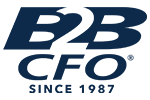
Business Owners’ Road Map to Navigating Post COVID-19 Recovery
Posted on September 10, 2020 by B2B CFO
 Nearly every business across the country is affected by the COVID-19 shutdown. Now that many parts of the U.S. are starting to slowly re-open, you may find that you need to quickly and smartly pivot and rethink your business operations, customer service process, and how to generate revenue.
Nearly every business across the country is affected by the COVID-19 shutdown. Now that many parts of the U.S. are starting to slowly re-open, you may find that you need to quickly and smartly pivot and rethink your business operations, customer service process, and how to generate revenue.
If you’re gearing up to reopen, there are numerous financial and logistical considerations you’ll need to account for. These considerations will help you get back to business in our new “normal’:
1. Start Planning Your Strategic “Re-Opening” Now
As we start to get a sense of what re-opening will look like, now is the time to anticipate and address critical questions about how business will resume. To get ahead of this, prioritize re-engagement with customers, vendors, and employees. Communicating with these individuals will show them they are not forgotten and what your plan is to resume business. Also, consider proactively reaching out to all of your customers, especially your most loyal. Figure out a plan to continue working or meeting with customers and clients remotely. How will you start your operations up—slowly, safely and smartly? Put together a 1- to 3-month plan that can be resilient as new changes emerge.
2. Update Product Offerings
Your company can revamp its offerings to better meet customer needs or to provide something new as we enter the recovery stages. This strategy can be combined with raising prices to introduce another aspect of differentiation or to position the company’s offering as a premium product. Competition and crisis are cornerstones of innovation in the business world. Coming up with new or updated product offerings can work in the short-term, but if a company cannot keep innovating and generating new and novel products that consumers will demand in the future, it will be difficult to stay afloat.
3. Regain Lost Revenue
Anticipate a backlog of customers, orders, and projects needing your attention as we re-open. Don’t under or overestimate what that will look like. You don’t want to disappoint your customers, but be sure to communicate your eagerness to get back to business. Focus on your most profitable customers who have shown loyalty in your high-value service lines. Offer discounts, incentives, and other brand-boosting strategies to start recovering lost revenue.
4. Rebuild the Connection with Existing Customers
If your business operations are currently affected, it is not the time to focus on acquiring new customers. Use your email list to open a line of communication, keeping your brand at the top of your customers’ minds. Offer free services, consultative discussions or other promotions that will keep them engaged with you and your brand. Be sure you communicate that you are putting your employees’ and customers’ well-being first. Consider what your customers could most use right now, whether it’s relevant and timely information or a discount on essential products or services. Connect with your audience in real time. Update your website with daily information important to customers, stay engaged through social media channels, and even do something to support your community.
5. Adjust Your Service Offerings
This outbreak shouldn’t limit the value you provide to your customers. Many small businesses are moving their services online by connecting with customers through video conferencing. Prioritize how you can immediately provide connection and value to keep customers from canceling services. Hold online conference calls, identify the most important aspect of your business and dial in on that. Retail, travel and luxury services will be the most impacted, so see how you can pivot your offerings to an online experience, with deep discounts, and sales.
6. Negotiate with Your Landlord, Vendors, and Suppliers
Assess your liabilities, such as your accounts payable, to see where you can possibly create a deal to manage your cash flow shortage. For example, many businesses likely work with a few suppliers and vendors where they regularly purchase their inventory and other supplies. Reach out to your vendors and see if you can extend your usual payment terms, or if your vendor can offer a temporary payment grace period. If you lease your business location, you may also want to speak with your landlord to see if they are able to offer some sort of payment grace period or discount on rent.
7. Look Into Available Financial Assistance Programs
Fortunately, there are several local, state, and federal assistance programs launching to help small businesses deal with the fallout from the COVID-19 outbreak. The recently passed CARES Act includes a number of provisions to help support small businesses impacted by COVID-19, as well as the newly created SBA Paycheck Protection Program (PPP). SBA PPP loans are designed to provide financial assistance to small businesses to help them keep employees on their payrolls. A B2B CFO® can help answer critical and timely questions regarding your application process and other requirements.
8. Revamp Your Budget
Not all businesses are fortunate enough to have 3 to 6 months of cash reserves on hand. Coming out of the COVID-19 pandemic, you may have to spend money on hiring and training new employees or rehiring ones you had to lay off. Inventory may need to be purchased, and you might have to bolster your advertising budget again to start building a fresh brand. As part of your coronavirus recovery, you should have a clear idea of what you need to be budgeting for and what you can cut to make the most of the revenue you do have flowing in.
9. Develop a Re-Planning Strategy
You may have several things you need or want to do to recover following COVID-19, but doing everything at once may not be realistic. What can help is having a time line to follow that prioritizes your most important actions first. Your 2020 plans have been derailed so you need a new, forward-thinking strategy. Now more than ever, your customers will seek value, and this comes from meeting their needs. When you prioritize value in the post-COVID-19 world, revenue will follow.
10. Create a Contingency Plan for the Next Crisis
This pandemic may seem like a once-in-a-lifetime event, but the U.S. has experienced several recessions over the last fifty years. From the 1970s OPEC oil price hikes to the 1990s savings and loan crisis, the first dot-com bust, to the global banking crisis in 2008, these downturns show us that we are not in control of what impacts our economy. However, using what you’ve learned during the current pandemic to prepare for the next crisis can help you insulate your business from future shocks.
Be serious about building up liquid cash savings, pay down debt, trim non-essential spending, ensure your staff can work remotely for an extended period of time, and be flexible. With outside-the-box thinking to prepare for a worst-case scenario, your company may not just survive, but thrive when a new crisis strikes.
The same factors that are creating CHALLENGES to your business are also creating new OPPORTUNITIES for growth. B2B CFO® is here to guide your company’s future to ensure productivity and profits as the country returns to normalcy.
If your business can use a sounding board and CFO guidance during these uncertain times, contact me at ArtBottoms@B2BCFO.com


